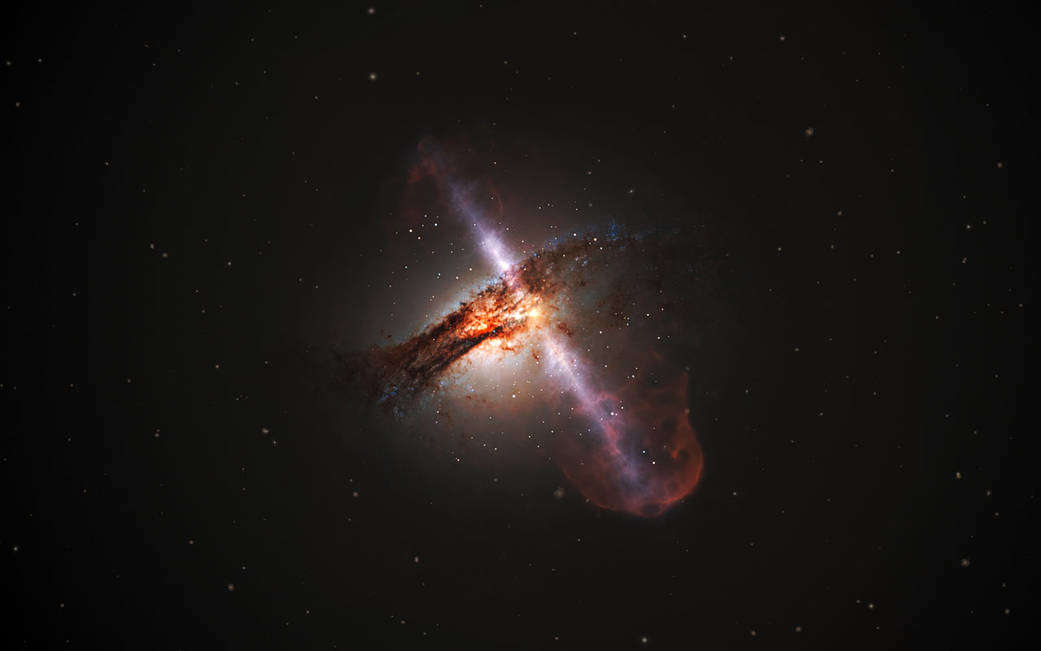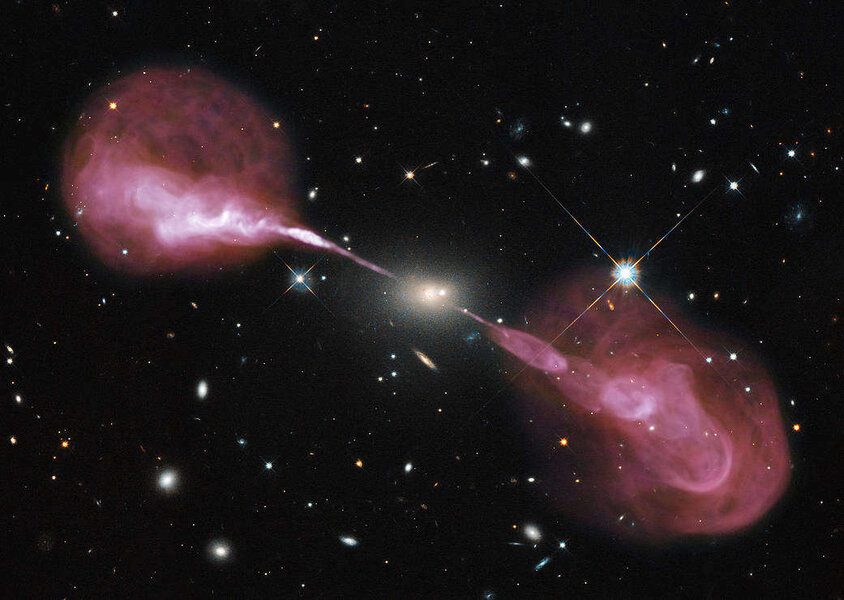Create a free profile to get unlimited access to exclusive videos, sweepstakes, and more!
Supermassive black holes eat too much stardust for stars to actually form

If black holes are already ravenous for star stuff (and any unfortunate star that happens to pass by them), then supermassive black holes have a supermassive appetite.
The gluttony of supermassive black holes in active galactic centers (AGNs) could mean that they don’t leave behind enough leftovers for new stars to form. When a black hole is massive enough to fit millions of suns, its gaping maw demands massive amounts of stardust. Star formation — or the lack thereof — in galaxies has been an ongoing debate. Finding out exactly what it is that keeps some galaxies from birthing stars could shed new (star)light on galactic evolution.
Now Joanna Piotrowska of the University of Cambridge, who recently presented a study at the Virtual National Astronmy Meeting, finally has an answer to a question that was lingering for decades. Astronomers had not previously been confounded by what holds back star formation in some galaxies, known as quiescent galaxies, which still produce stars but hardly anywhere near as fast as those that see much more action.
“The transition between a regular star-forming galaxy and one which is no longer forming new stars is an incredibly complex process,” she told SYFY WIRE. “It involves a change galaxy structure and dynamics, which leads to a broad range of relationships observed between different galactic properties and decreased star formation.”
How gas and stars move within a galaxy and the changes to those movements, along with many other physical processes, can tell us whether stars are being born there. Piotrowska and her research team needed a way to observe potential star-forming and star-halting situations without observing actual galaxies for years on end. Enter AI and a trio of simulations that could figure out what is turning on and switching on star formation in any given galaxy. These simulations were the next best thing to actually watching what happens in space in real time.
It would actually be impossible to watch these phenomena happen in real time because they can take many human lifespans. High-tech cosmological simulation programs EAGLE (Evolution and Assembly of GaLaxies and their Environments), Illustris and IllustrisTNG, combined with actual observations from the Sloan Digital Sky Survey, helped the researchers see into some previously mysterious galactic processes by linking physical causes and effects. Simulations are the next best thing to a time machine that can go back millions, even billions of years to see dusty, gaseous star-forming clouds and how supermassive black holes had an impact on them.
“What is crucial for our research, is that these simulations let us see whether there is a connection between phenomena such as exploding stars and reduced star formation in the simulated universes resembling our present-day observations,” Piotrowska said.
Each simulation showed different ways that supermassive black holes squashed a galaxy’s star formation. EAGLE was created to further the understanding of how galaxies come into being, and is able to model structures forming in up to 10,000 galaxies that can be even larger than the Milky Way. The simulation starts with a nascent universe that didn’t yet have any stars or galaxies and continues through the formation of cosmic objects such as stars and supermassive black holes. Illustris compares simulated galaxies to those in the known universe. Illustris TNG adds to that by using a numerical code to show what physical process form galaxies.
What ended up being especially useful about these simulations was how they touched on the three main reasons that the plug gets pulled on star formation. For one, the mass of a supermassive black hole relates to the gargantuan amount of energy that black hole spews out through winds and jets. Also, how much energy supernovas inject into galactic gas when they explode depends on the total mass of stars in that galaxy. The last thing a simulation needs to remember is that gas traveling at supersonic speeds is heated suddenly and rapidly by the mass of a galaxy's dark matter halo. This is thermal shock or shock heating.
“There is a range of phenomena observed in and around galaxies, which can successfully limit future star formation,” Piotrowska said. “These include heating of gas around galaxies by jets launched by supermassive black holes, turbulence in galactic gas caused by those jets, and gas removal through winds launched from black hole accretion discs.”
Now that answer has been found, it opens up a galaxy’s worth of new questions. Piotrowska and her team are now trying to look at interactions between supermassive black holes and galaxies on a more micro level to see how galactic structure is influenced by these black holes. Maybe the dead ends of the universe aren’t so dead as they seem.















